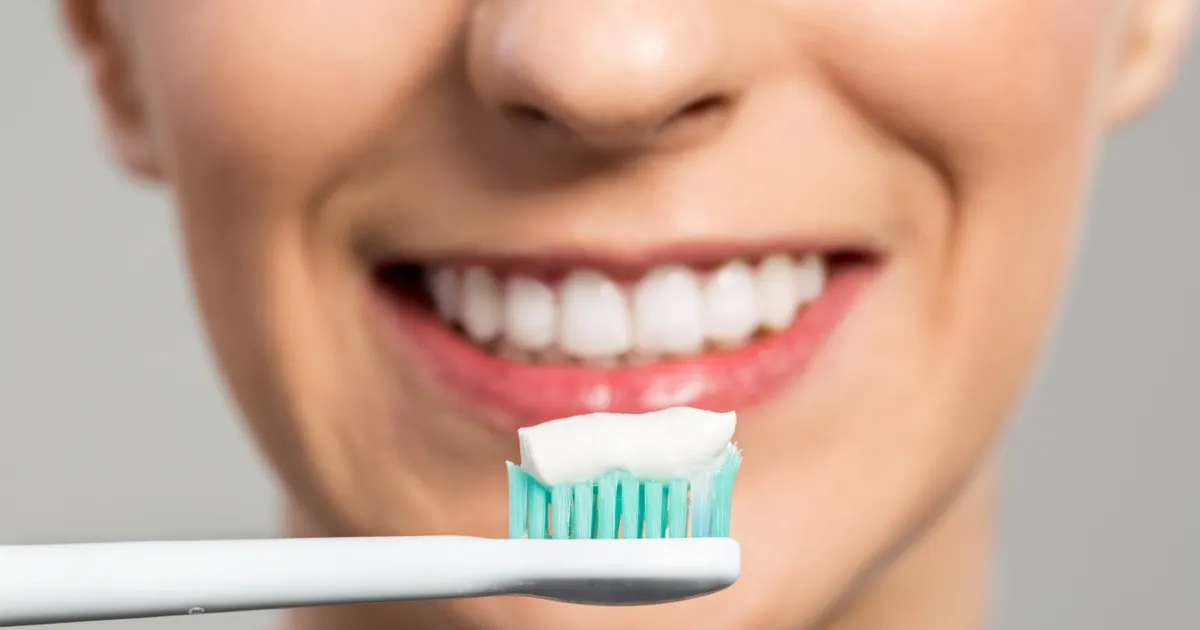A bright smile can do wonders for one’s appearance and confidence, which is why many people turn to whitening toothpaste. Yet, in this overcrowded market, it can be difficult to know where to start. From pastes to gels, with added baking soda or hydrogen peroxide, the options can feel overwhelming.
By understanding the different types and options available, you can select the right one for your smile. Start a search today to find the best whitening toothpastes.
 Shutterstock: didesign021
Shutterstock: didesign021Look For Whitening Agents
Any toothpaste can claim to give you a whiter smile, but their ingredients may be telling a different story! Whitening agents are the active ingredients in these pastes and gels that are responsible for removing stains. 1 Scan the box of your whitening toothpaste and look for these agents:
- Hydrogen peroxide
- Carbamide peroxide
- Baking soda
Keep in mind that each of these agents whiten your teeth by different methods. For that reason, it’s important to use it according to the instructions provided to avoid potential side effects, such as tooth sensitivity or irritation.
How Do Bleaching Agents Differ?
The main differences between these whitening agents are their chemical composition and effectiveness at removing stains from teeth. Dentists commonly use hydrogen peroxide and carbamide peroxide as bleaching agents in professional teeth whitening treatments.
Hydrogen peroxide works by breaking down the chemical bonds that hold surface stains to the tooth enamel, making them easier to remove. Carbamide peroxide, on the other hand, breaks down into hydrogen peroxide and urea, removing surface stains. Both can effectively lighten teeth by several shades with regular use.
What About Baking Soda?
Baking soda, meanwhile, is a popular home remedy featured in certain whitening toothpastes. It works by acting as a mild abrasive that can scrub away surface stains. As an added perk, it has a high pH, which can help to neutralize the acids in the mouth that can lead to tooth decay and discoloration.
While baking soda is a safe and effective way to remove surface stains, it may not be as effective as hydrogen peroxide or carbamide peroxide at removing discoloration. Plus, since baking soda is an abrasive, it’s important to use it in moderation. Overuse of baking soda can be abrasive and potentially damage tooth enamel.
The Importance of ADA Approval
Generally speaking, whitening toothpastes can be more abrasive than regular toothpastes, potentially damaging tooth enamel over time. If you’re worried about these effects, the American Dental Association (ADA) Seal of Acceptance can be a helpful guide. 2
This voluntary program evaluates dental products, including toothpaste, for safety and effectiveness. Products that earn the ADA Seal of Acceptance have been rigorously tested by dental professionals to ensure that they meet the ADA’s standards.
To earn the ADA Seal of Acceptance, toothpaste must meet certain requirements. It must demonstrate:
- that it is safe for use,
- that it does what it claims to do, and
- that its packaging and labeling are accurate and not misleading.
In addition to this criteria, the toothpaste must meet certain standards for ingredients and manufacturing processes. Make sure your toothpaste has been approved by the ADA.
Sensitivity
Tooth sensitivity is a common side effect of whitening toothpaste. 3 Since these products work by breaking down surface stains on the teeth, the tooth enamel can become more porous and sensitive. This can result in discomfort or pain when consuming hot or cold foods and beverages, or when brushing and flossing.
In such cases, it may be helpful to switch to a toothpaste that is specifically designed for sensitive teeth. These toothpastes contain ingredients like potassium nitrate or strontium chloride that help to reduce sensitivity and discomfort. Alternatively, you can use whitening toothpaste less frequently, or begin using a soft-bristled toothbrush. 4 It’s also a wise idea to avoid foods and drinks that are highly acidic.
If tooth sensitivity persists or becomes severe, you should consult with a dentist to rule out any underlying dental issues. Your dentist may recommend professional treatments such as desensitizing agents, fluoride treatments, or dental bonding.
Recommended Whitening Toothpaste Under $10
Whitening toothpastes can be a simple and affordable addition to your daily oral care routine, helping you maintain a dazzling smile without spending a fortune. For those on a budget, several options under $10 stand out for their efficacy and affordability:
- Crest 3D White Radiant Mint, which contains polishing agents that gently remove surface stains while strengthening tooth enamel, 5
- Colgate Optic White Stain Fighter, which combines the power of hydrogen peroxide and micro-polishers to effectively whiten teeth and prevent future stains, and 6
- Arm & Hammer Advance White, which harnesses the natural power of baking soda to gently scrub away stains and neutralize plaque acids. 7
Whichever you choose, these whitening toothpastes are a great investment in your oral health and overall confidence.
A Brighter, Whiter Smile
The effectiveness of these whitening agents can vary, depending on the severity of the staining and the concentration of the whitening agent. However, there’s no question that they can assist you in acquiring a brighter, whiter smile.
Using a whitening toothpaste as part of a consistent dental hygiene routine can help you achieve a healthy-looking smile. To achieve the best results, it’s important to maintain good dental hygiene habits. Remember to brush twice a day, floss daily, and visit your dentist for regular checkups and cleanings.
